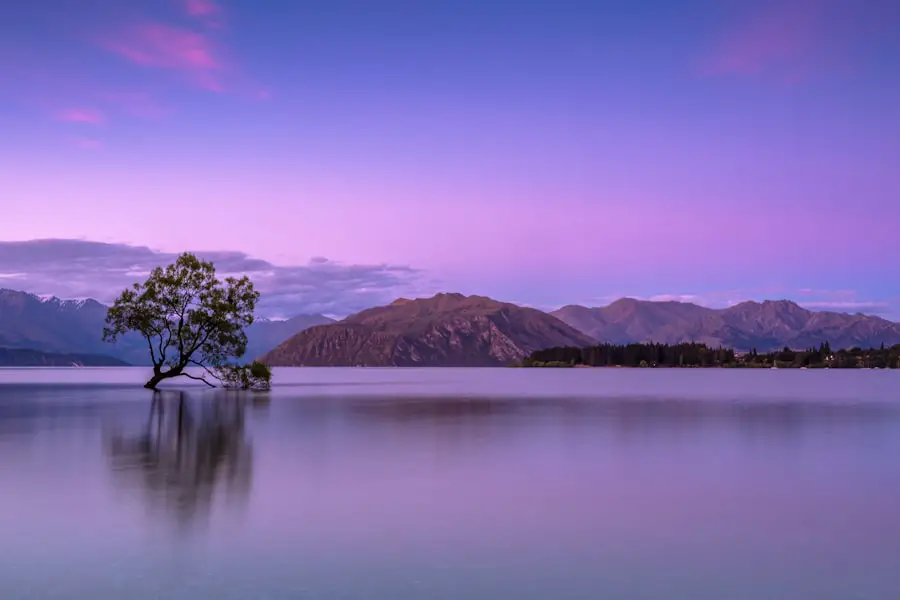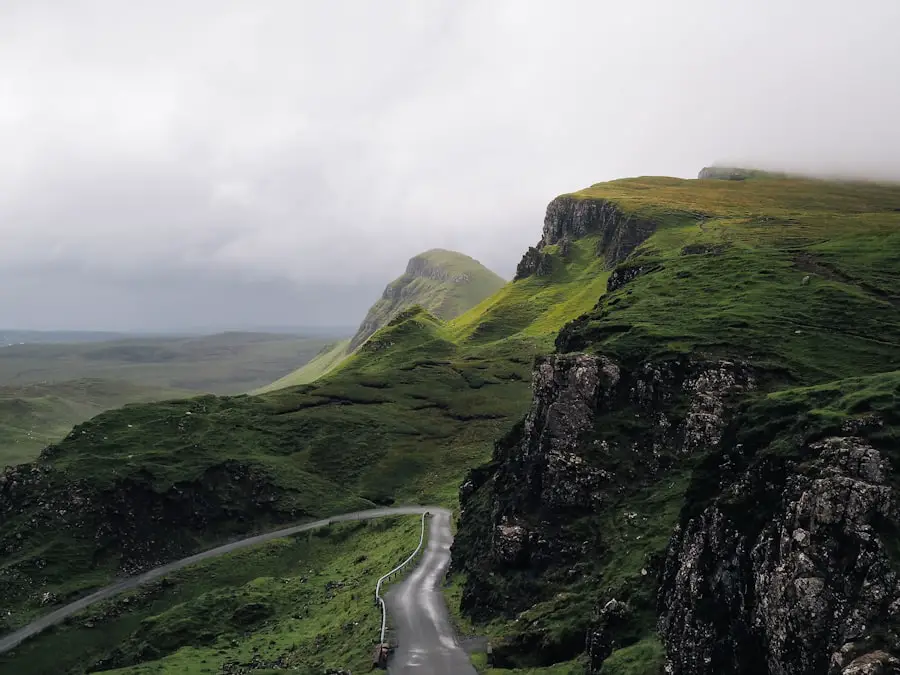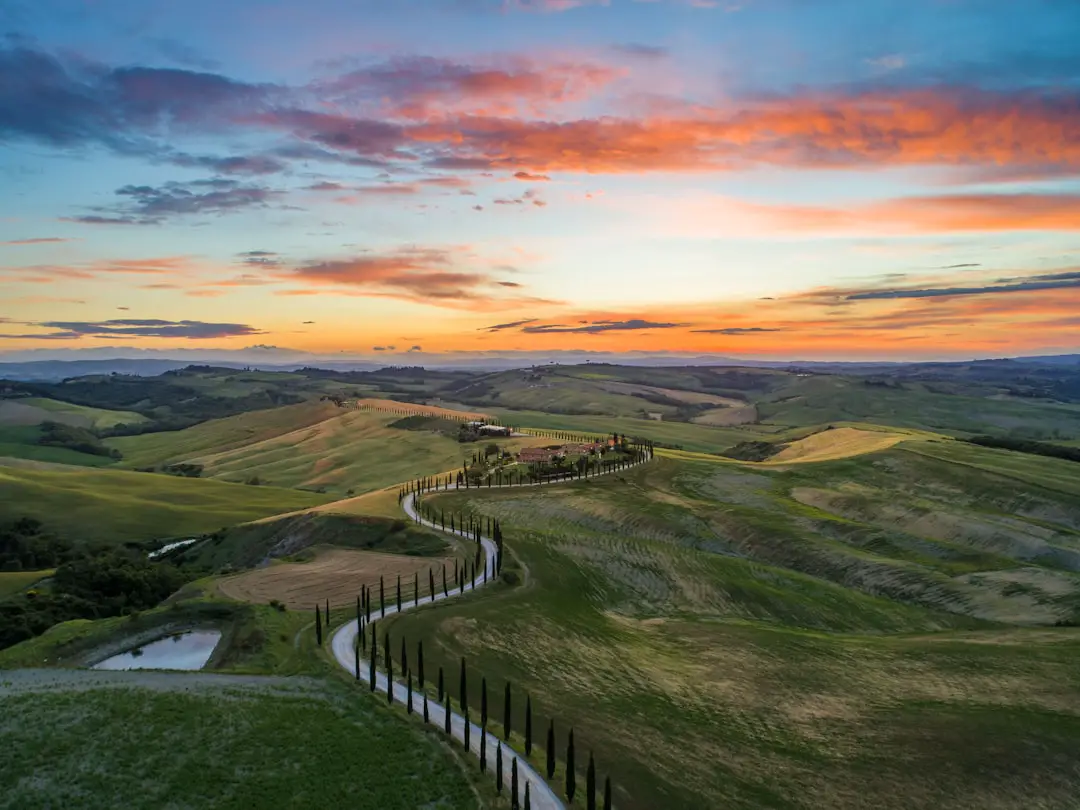Machu Picchu, the iconic Incan citadel nestled high in the Andes Mountains of Peru, experiences a diverse range of weather patterns that significantly influence the visitor experience. The region is characterized by a subtropical highland climate, which means that temperatures can vary considerably between day and night. During the day, temperatures can reach a comfortable 20 to 25 degrees Celsius (68 to 77 degrees Fahrenheit), while at night, they can drop to around 10 degrees Celsius (50 degrees Fahrenheit).
This diurnal temperature variation is particularly pronounced during the dry season, which runs from May to September, making it an ideal time for trekking and exploration. Rainfall is another critical factor to consider when planning a visit to Machu Picchu. The wet season typically spans from November to March, with January and February being the peak months for precipitation.
During this time, the region can experience heavy downpours, which may lead to muddy trails and limited visibility. However, the lush greenery that emerges after the rains can create a stunning backdrop for photographs, showcasing the vibrant flora that thrives in this unique ecosystem. Understanding these weather patterns is essential for travelers who wish to maximize their experience at this UNESCO World Heritage site.
Key Takeaways
- Machu Picchu experiences two main weather seasons: dry season from May to October and wet season from November to April
- Peak tourist seasons in Machu Picchu are from June to August, with the busiest month being July
- Off-peak tourist seasons are from November to March, with fewer crowds and lower prices
- Festivals and events in Machu Picchu include Inti Raymi in June and the anniversary of Machu Picchu’s discovery in July
- Availability of accommodation and tours may be limited during peak tourist seasons, so it’s advisable to book in advance
- The cost of travel to Machu Picchu can vary depending on the season, with higher prices during peak tourist seasons
- Machu Picchu is generally safe for tourists, but it’s important to be cautious of pickpocketing and to follow safety guidelines
- Personal preferences and considerations, such as tolerance for crowds and weather, should be taken into account when planning a trip to Machu Picchu
Peak Tourist Seasons
The peak tourist seasons in Machu Picchu coincide with the dry months of May through September, when the weather is most favorable for outdoor activities. During this period, thousands of visitors flock to the site, drawn by the promise of clear skies and pleasant temperatures. June is particularly busy, as it coincides with the Peruvian winter holidays and attracts both international tourists and local families.
The influx of visitors during these months can lead to crowded trails and longer wait times for guided tours, making it essential for travelers to plan their itineraries carefully. In addition to the weather, cultural factors also play a role in determining peak tourist seasons. Many travelers aim to experience Machu Picchu during significant dates, such as the summer solstice in June, when the sun rises directly over the Intihuatana stone, a ritual stone associated with astronomy in Incan culture.
This phenomenon draws not only tourists but also local residents who participate in traditional ceremonies. As a result, those planning to visit during peak seasons should be prepared for a bustling atmosphere and consider booking accommodations and tours well in advance to secure their desired experiences.
Off-Peak Tourist Seasons

Conversely, the off-peak tourist seasons in Machu Picchu occur during the wet months of November through March. While this period may deter some travelers due to the likelihood of rain, it offers unique advantages for those willing to embrace the elements. Fewer tourists mean less crowded trails and a more intimate experience with the ancient ruins.
Visitors during these months can enjoy a more tranquil atmosphere, allowing for deeper reflection on the historical significance of Machu Picchu without the distractions of large crowds. Moreover, traveling during the off-peak season can lead to cost savings on accommodations and tours. Many hotels and tour operators offer discounts or special packages to attract visitors during these quieter months.
Additionally, the landscape is transformed into a lush paradise after the rains, providing a different perspective on the natural beauty surrounding Machu Picchu. The vibrant colors of the flora and fauna create a stunning contrast against the ancient stone structures, making it an excellent time for photography enthusiasts seeking unique shots of this world-renowned site.
Festivals and Events
| Event Name | Location | Date | Attendance |
|---|---|---|---|
| Coachella | Indio, California | April 10-19, 2020 | 250,000 |
| Glastonbury Festival | Glastonbury, England | June 24-28, 2020 | 135,000 |
| Burning Man | Black Rock City, Nevada | August 30 – September 7, 2020 | 80,000 |
Machu Picchu is not only a historical marvel but also a cultural hub that hosts various festivals and events throughout the year. One of the most significant celebrations is Inti Raymi, or the Festival of the Sun, which takes place every June 24th in Cusco but has roots deeply connected to Machu Picchu. This ancient Incan festival honors Inti, the sun god, and marks the winter solstice in the Southern Hemisphere.
The event features colorful parades, traditional music, and reenactments of Incan rituals, drawing both locals and tourists who wish to witness this vibrant display of culture. Another notable event is the Qoyllur Rit’i festival, celebrated in late May or early June near the Sinakara Valley, not far from Machu Picchu. This festival combines indigenous Andean traditions with Catholic elements and involves a pilgrimage to worship the Lord of Qoyllur Rit’ Participants often trek through challenging terrain to reach the sanctuary, showcasing their devotion and connection to their cultural heritage.
For travelers interested in immersing themselves in local customs and traditions, attending these festivals can provide a deeper understanding of the rich tapestry of life surrounding Machu Picchu.
Availability of Accommodation and Tours
The availability of accommodation and tours in Machu Picchu varies significantly depending on the season. During peak tourist months, securing lodging can be challenging due to high demand. Popular hotels often book up months in advance, particularly those located near Aguas Calientes, the town that serves as the gateway to Machu Picchu.
Travelers are encouraged to explore various options ranging from luxury hotels to budget hostels to ensure they find suitable accommodations that meet their needs. In contrast, during off-peak seasons, visitors may find greater flexibility in booking accommodations and tours. Many hotels offer promotional rates or packages that include guided tours or meals, making it an attractive option for budget-conscious travelers.
Additionally, tour operators may have more availability for guided hikes along popular trails such as the Inca Trail or alternative routes like Salkantay or Lares treks. This increased availability allows travelers to customize their experiences based on personal preferences without feeling rushed or constrained by limited options.
Cost of Travel

Peak Season: Higher Prices and Increased Demand
During peak tourist seasons, prices for travel and accommodations tend to rise significantly due to increased demand. For example, train tickets from Cusco to Aguas Calientes can be substantially higher during these months compared to off-peak times when discounts are more common.
Off-Peak Seasons: Savings and Discounts
On the other hand, visiting during off-peak seasons can lead to considerable savings on travel expenses. Many airlines offer lower fares during these months as they seek to fill seats on flights that might otherwise be underbooked. Accommodations often provide competitive pricing or special deals aimed at attracting visitors during quieter periods.
Planning Ahead: The Key to an Affordable Trip
By carefully planning their travel dates and being flexible with their itineraries, travelers can enjoy a memorable experience at Machu Picchu without breaking the bank. It’s essential to budget accordingly and consider booking trips well in advance to secure better rates.
Safety and Security
Safety and security are paramount considerations for travelers heading to Machu Picchu. The site itself is generally safe for tourists; however, like any popular destination, it is essential to remain vigilant against petty crime such as pickpocketing or theft in crowded areas. Visitors are advised to keep their belongings secure and avoid displaying valuable items openly while exploring both Machu Picchu and Aguas Calientes.
In addition to personal safety concerns, travelers should also be aware of health-related issues when visiting high-altitude locations like Machu Picchu. The citadel sits at an elevation of approximately 2,430 meters (7,970 feet) above sea level, which can pose challenges for those unaccustomed to high altitudes. Symptoms of altitude sickness may include headaches, nausea, and fatigue.
To mitigate these risks, it is advisable for travelers to acclimatize gradually by spending time at lower elevations before ascending to Machu Picchu and staying hydrated throughout their visit.
Personal Preferences and Considerations
When planning a trip to Machu Picchu, personal preferences play a crucial role in shaping the overall experience. Some travelers may prioritize avoiding crowds and prefer visiting during off-peak seasons despite potential rain; others may opt for peak times for guaranteed clear weather and vibrant cultural experiences. Understanding one’s own travel style—whether it leans towards adventure-seeking or cultural immersion—can help guide decisions regarding timing and activities.
Additionally, considerations such as physical fitness levels should influence choices related to trekking routes or guided tours. For instance, those seeking a challenging adventure may choose multi-day treks like the Inca Trail or Salkantay Trek that require significant physical endurance. Conversely, visitors looking for a more leisurely experience might prefer guided tours that focus on historical insights without strenuous hiking involved.
Ultimately, aligning travel plans with personal interests ensures a fulfilling journey through one of the world’s most remarkable archaeological sites.
If you are planning a trip to Machu Picchu, you may also want to consider investing in the best travel gear for your adventure. Check out this article on 5 Must-Have Hardside Carry-On Luggage with Spinner Wheels for Spring 2025 to ensure you have the right luggage for your journey. Having the proper gear can make your trip to Machu Picchu even more enjoyable and stress-free.
FAQs
What is the best time to travel to Machu Picchu?
The best time to travel to Machu Picchu is during the dry season, which runs from May to October. This is when the weather is typically clear and sunny, making it ideal for exploring the ancient ruins.
What is the weather like at Machu Picchu during the best time to travel?
During the dry season, the weather at Machu Picchu is generally mild and sunny during the day, with cooler temperatures at night. It is important to note that weather in the Andes can be unpredictable, so it’s always best to be prepared for changes.
Are there any specific months to avoid when planning a trip to Machu Picchu?
The rainy season in Machu Picchu runs from November to April, and it is generally best to avoid visiting during this time. Heavy rainfall can lead to muddy and slippery trails, as well as obstructed views of the ruins.
What are the crowds like during the best time to travel to Machu Picchu?
The dry season, particularly the months of June to August, tends to be the busiest time at Machu Picchu. It is advisable to book tickets and accommodations well in advance to avoid disappointment.
Are there any specific events or festivals that take place during the best time to travel to Machu Picchu?
Inti Raymi, the Inca Festival of the Sun, takes place in Cusco in late June and is a popular event that draws visitors from around the world. This can be a great addition to a trip to Machu Picchu during the dry season.
